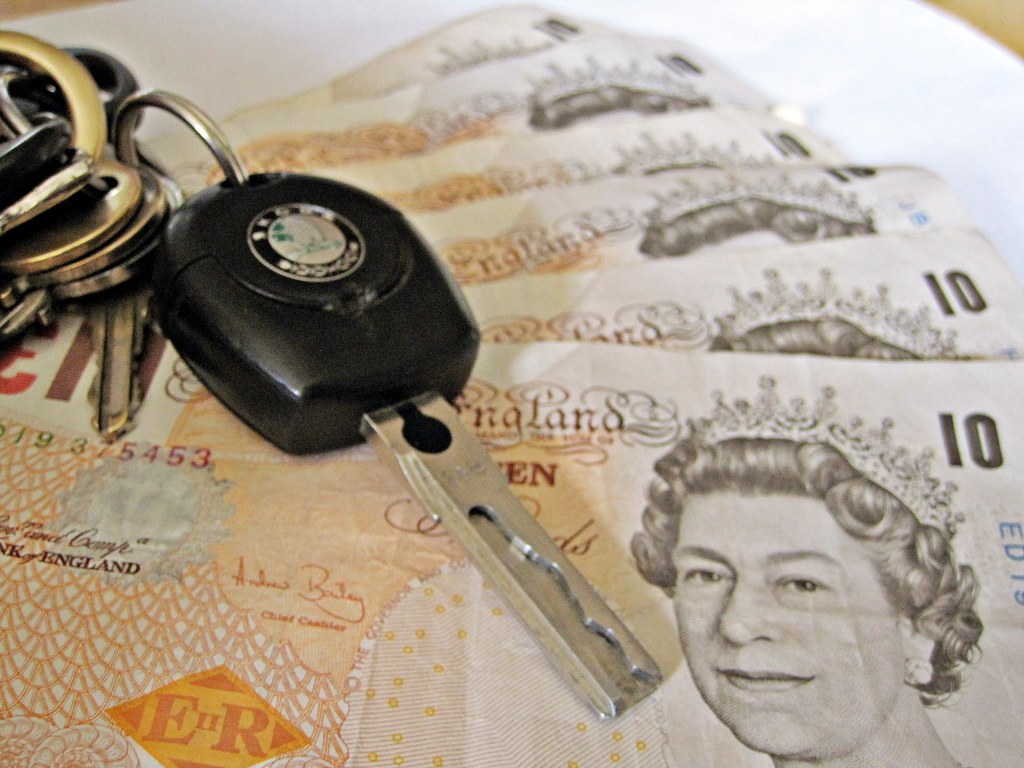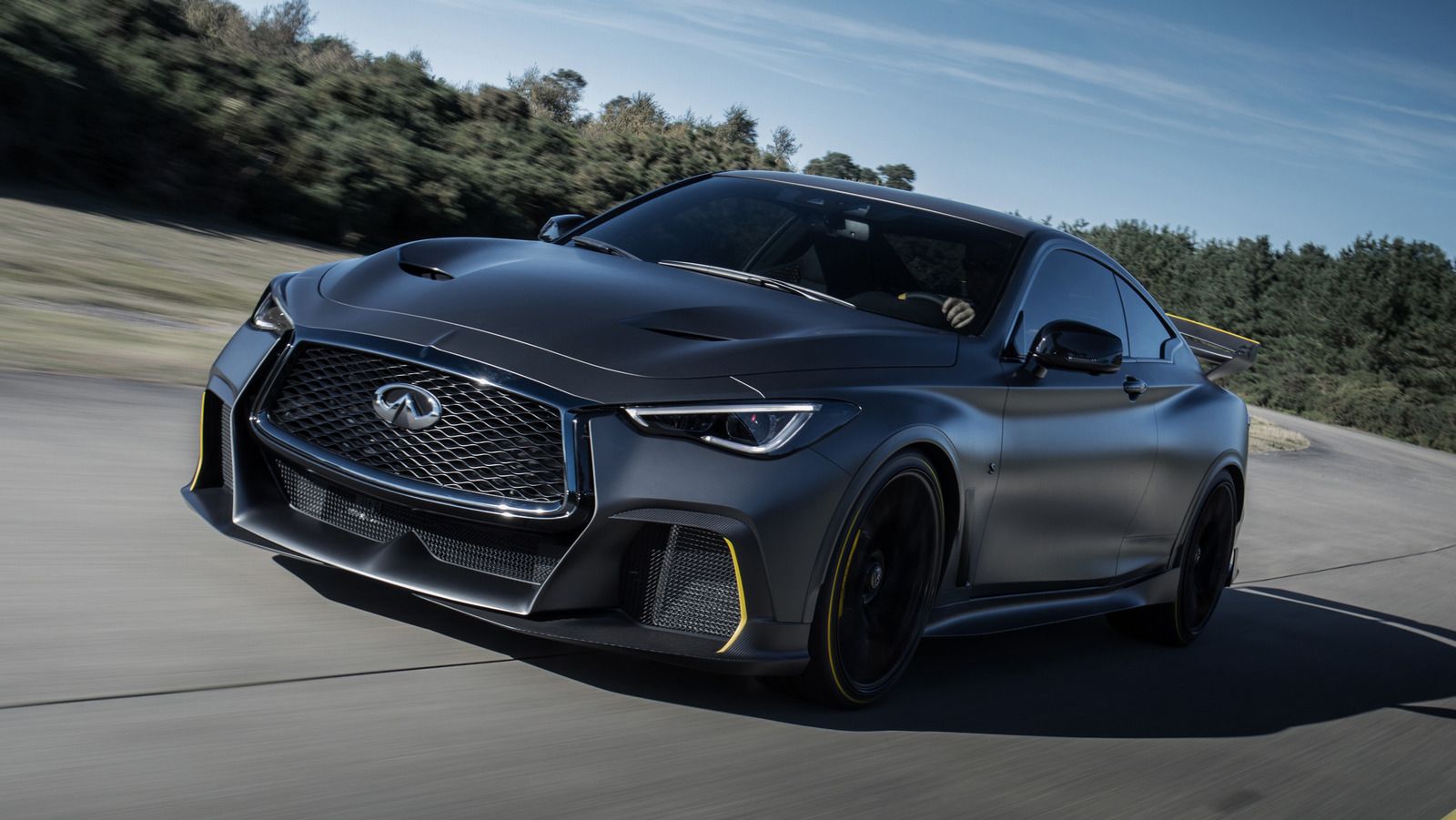
Our love affair with cars isn’t just about what’s in our garage; it’s deeply rooted in the magic of the silver screen and the glow of our television sets. Long before we even dreamed of getting our driver’s licenses, these four-wheeled marvels zoomed into our imaginations. They became the stuff of dreams, inspiring us to imagine doing daring reverse 180s like Jim Rockford or fleeing pursuers in a legendary Shelby Mustang named Eleanor.
Movie and TV cars aren’t just props; they often become characters themselves, sometimes even stealing the show from their human co-stars. They define epic chase scenes, deliver punchlines, and even embark on their own incredible journeys. These vehicles are more than just transportation; they’re symbols of rebellion, innovation, and pure, unadulterated cool, sparking a passion for automobiles that lasts a lifetime.
So, buckle up, buttercup, because we’re about to take a joyride through some of the most unforgettable automotive legends that have graced our screens. Get ready to revisit the rides that made our hearts race, our jaws drop, and our inner gearheads cheer! We’re kicking off with the first half of our list, featuring six absolute icons that have left an indelible mark on pop culture.
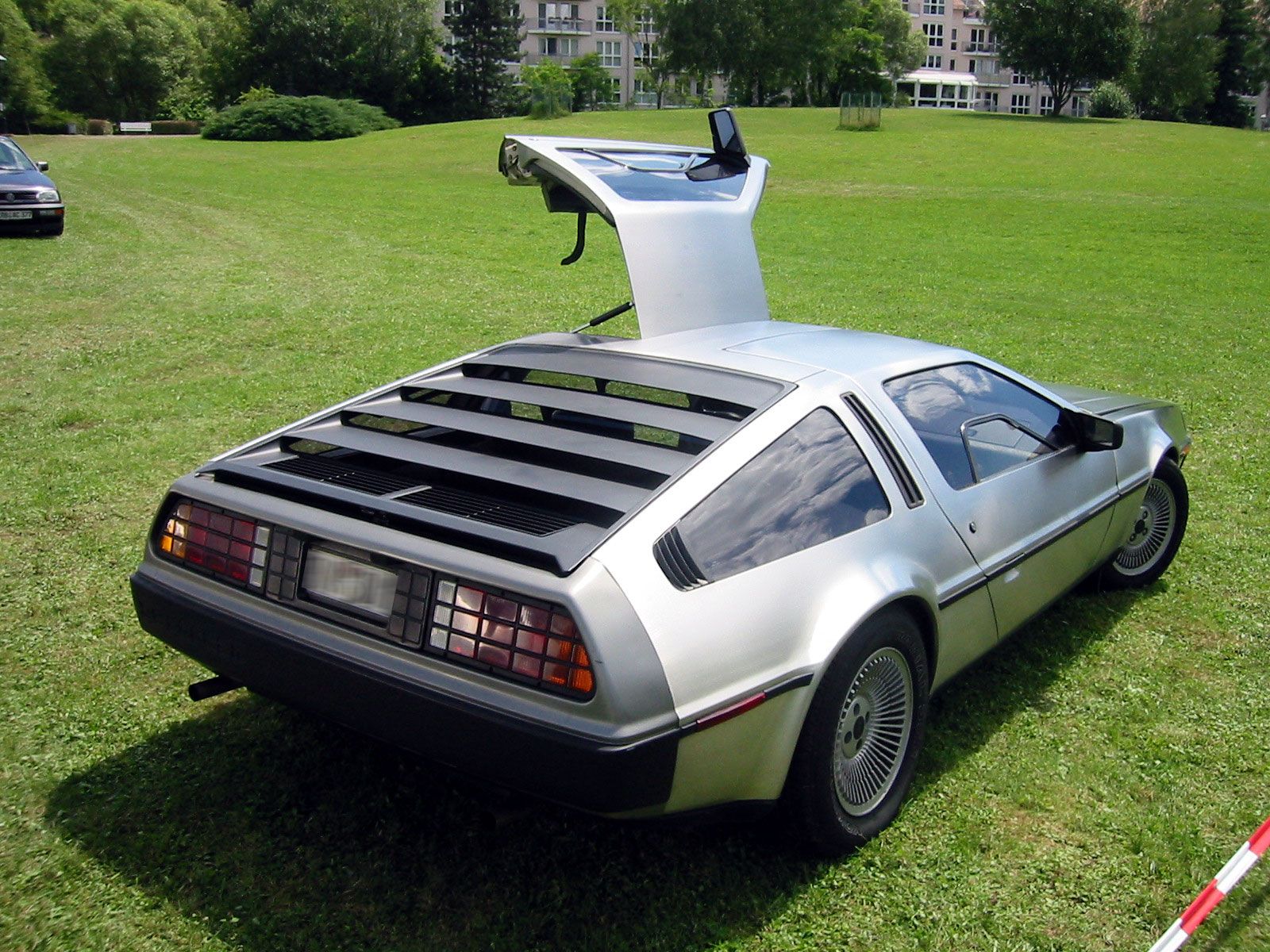
1. **1981 DeLorean DMC-12, ‘Back to the Future’**
Great Scott! Could there be a more iconic time machine than the 1981 DeLorean DMC-12 from “Back to the Future? With its unmistakable stainless steel body and those incredible gull-wing doors that swung open like a dream, this car wasn’t just a vehicle; it was the gateway to time travel itself. Doc Brown truly said it best: “The way I see it, if you’re gonna build a time machine into a car, why not do it with some style?”
While the keypad controls and the all-important flux capacitor weren’t factory standards, those crazy gull-wing doors came straight from the factory line, giving the DeLorean a look that screamed “future” even in 1985. This cinematic masterpiece captured the imaginations of millions, proving that with a little plutonium and a lot of flair, anything is possible. It showed us that a car could be so much more than just a way to get from A to B.
Today, you can still experience a piece of this cinematic magic! One of the original, highly modified DeLorean DMC-12s that starred as the trilogy’s main “hero car” is now on display at the Petersen Automotive Museum in Los Angeles. It underwent a painstaking restoration in 2020, bringing it back to its screen-accurate splendor. It’s truly a testament to a car that became, for many, the most famous film car ever produced.
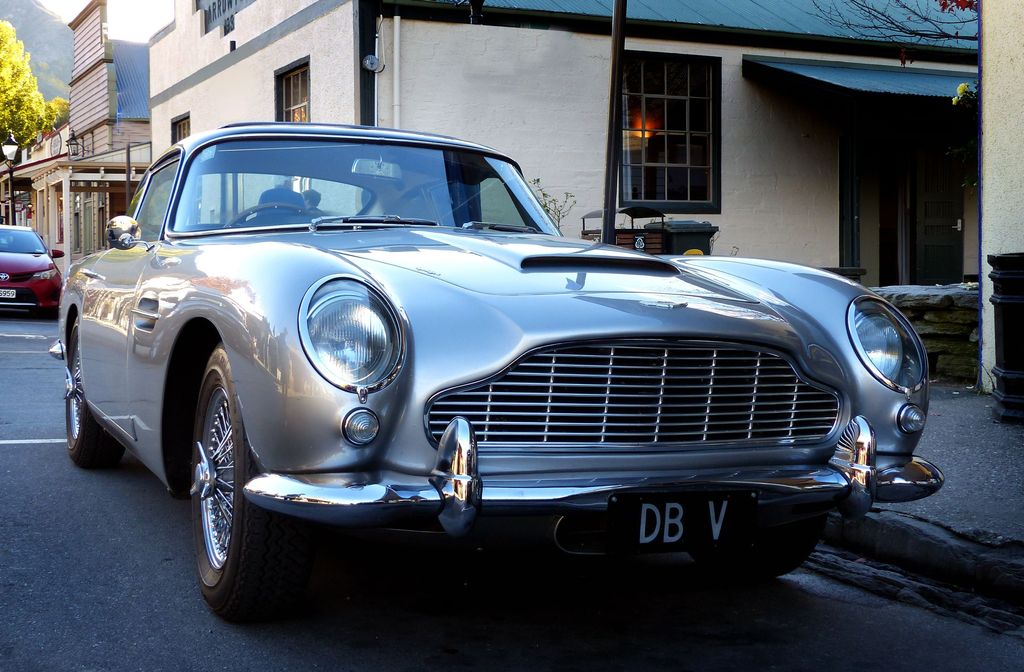
2. **Aston Martin DB5, ‘Goldfinger’**
When you think James Bond, you think gadgets, suave demeanor, and, of course, the Aston Martin DB5. First gracing the screen in 1964’s “Goldfinger,” this silver beauty didn’t just appear; it became synonymous with 007 himself. It set the gold standard for what a spy car should be, forever linking the Aston Martin brand to the world’s most famous secret agent.
Fitted by Q with “modifications” that would make any tech enthusiast swoon, the DB5 was packed with ingenious surprises. From its revolving number plates to its other movie-style gadgets, it wasn’t just a car; it was a mobile arsenal. This car defined an era of spy films and influenced countless automotive designs and narratives, becoming the benchmark against which all future movie and TV cars would be judged.
Sadly, the most famous of the original DB5s had a dramatic exit of its own, reportedly stolen from a Florida aircraft hangar in 1997 and remaining missing to this day, with an estimated value exceeding $25 million. However, its legacy is so powerful that Aston Martin announced in 2018 that it would make 25 recreations of Sean Connery’s tricked-out car, complete with those iconic gadgets, for a cool $3.5 million each. Now that’s commitment to coolness!
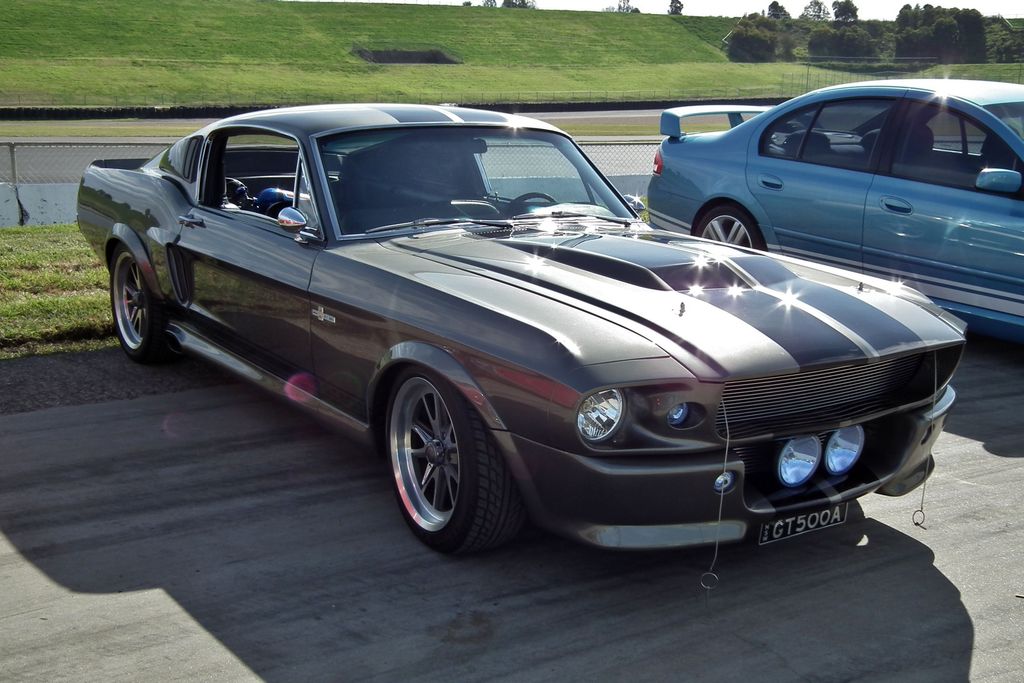
3. **1968 Ford Mustang GT Fastback, ‘Bullitt’**
Hold onto your hats, because here comes the 1968 Ford Mustang GT Fastback from “Bullitt” – the car that truly defined cool for over 40 years! This isn’t just any Mustang; it’s the star of what might be the most famous chase scene in motion-picture history, tearing through the hilly streets of San Francisco with Steve McQueen’s Lieutenant Frank Bullitt at the wheel. Its raw power and stripped-down aesthetic were unforgettable.
Even before the legendary pursuit began, this Mustang looked tough and ready for action, proudly sporting its dents and battle scars. Steve McQueen himself, a true car enthusiast, did much of the driving in the film, adding to the car’s authenticity and allure. This hands-on approach cemented the Mustang’s place as “one of the greatest Ford Mustangs of all time,” embodying rugged American muscle.
While McQueen famously hoped to keep the car for his personal collection, it slipped into private hands shortly after filming wrapped. His pleas to purchase it, even years later, unfortunately fell on deaf ears. Despite its elusive post-movie life, the “Bullitt” Mustang’s image, forever linked with McQueen’s cool, calm, and collected persona, continues to inspire car enthusiasts and filmmakers alike, proving that some legends never fade.
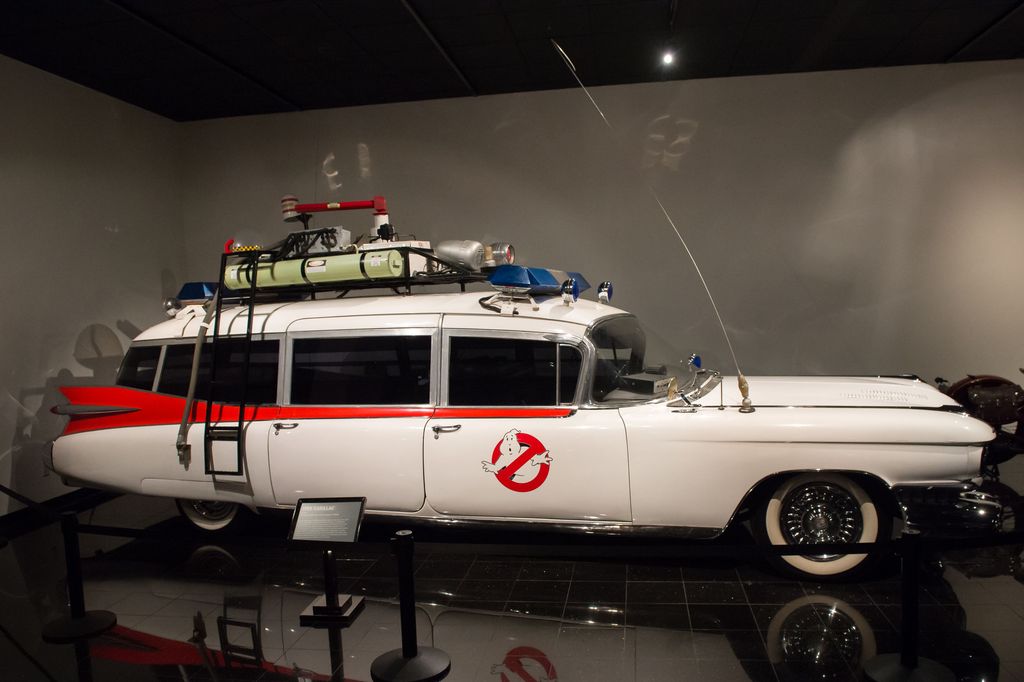
4. **1959 Cadillac Miller-Meteor, ‘Ghostbusters’**
Who ya gonna call when you need to bust some ghosts across New York City? The one and only Ecto-1, a modified 1959 Cadillac Miller-Meteor ambulance conversion, that’s who! This distinctive, finned vehicle from the 1984 film “Ghostbusters” served as the perfect, albeit somewhat unwieldy, transport for ghost-hunting equipment, becoming instantly recognizable as the Ghostbusters’ signature ride.
Weighing in at a hefty 3 tons and measuring over 20 feet long, the Ecto-1 was an absolute behemoth that was hard to miss, even amidst the bustling streets of Manhattan. It certainly wasn’t the most reliable star, as the car used during filming famously died on the Brooklyn Bridge, causing a massive traffic jam and earning the movie crew a police fine! Talk about a dramatic entrance.
Despite its on-screen breakdowns, the Ecto-1 earned its place in cinematic history. The original vehicle underwent a full and extensive restoration for the 2021 film “Ghostbusters: Afterlife,” a process that reportedly cost more than the original production of the vehicle back in 1984. Today, this iconic Cadillac remains proudly in Sony Pictures’ possession, ready for its next spectral adventure or fan event.
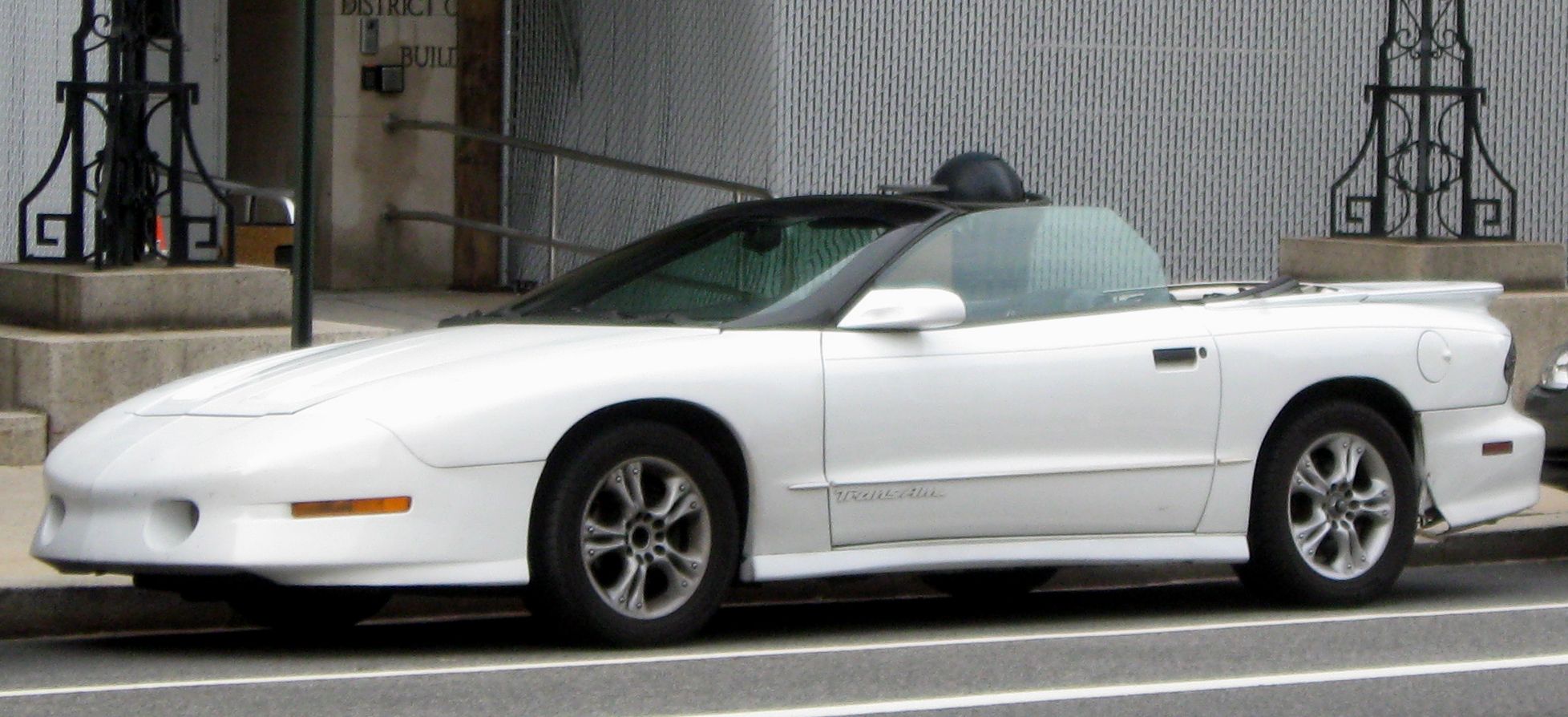
5. **1982-1984 Pontiac Trans Am, ‘Knight Rider’**
Move over, human co-stars, because the real star of the early ’80s action show “Knight Rider” was undoubtedly the Knight Industries Two Thousand, affectionately known as K.I.T.T.! This modified 1982 Pontiac Trans Am wasn’t just a car; it talked, it thought, and it effortlessly fought crime alongside David Hasselhoff’s Michael Knight. Honestly, we’re not sure which was bigger: K.I.T.T. or Hasselhoff’s impeccable hair!
K.I.T.T. was a true supercar of its time, boasting advanced artificial intelligence and an array of customized features, including those famous red strobe lights on its front fascia. NBC’s production team had to build around 20 customized Trans Ams to keep up with the demands of the series’ five-year run, ensuring there was always a K.I.T.T. ready for action, high-speed chases, and witty banter.
Amazingly, five of these incredible machines survived until the present day, according to Road and Track. One screen-used model even sold at auction for a cool $192,000 in 2021, proving its lasting appeal. Another lucky K.I.T.T. now belongs to a private collector who takes it to charity events, sharing the magic with fans. K.I.T.T. didn’t just drive; it sparked dreams of a future where cars could be our best, most articulate companions.
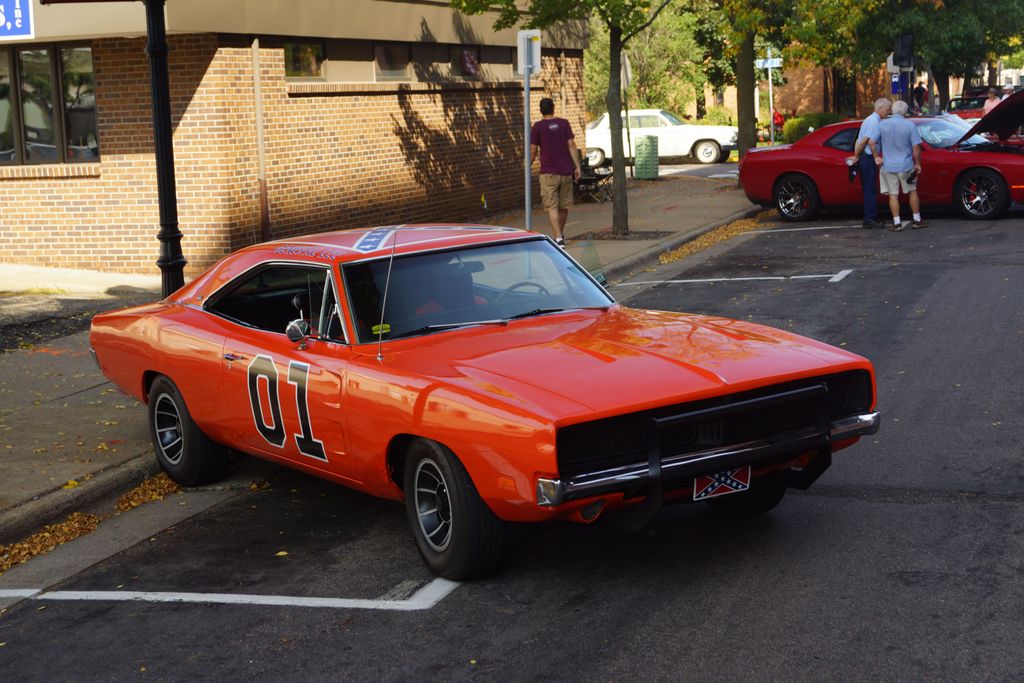
6. **1969 Dodge Charger, ‘The Dukes of Hazzard’**
If there’s one car that screams pure, unadulterated Southern charm and daredevil stunts, it’s the bright orange 1969 Dodge Charger, famously known as the General Lee, from “The Dukes of Hazzard.” With its signature ’01’ on the doors and that iconic Confederate flag on the roof (though the latter has since sparked controversy), this car was the ultimate Hollywood star.
The General Lee was practically a character in itself, starring in some of the most memorable car jumps and chases in TV history. The series’ production team truly put these Chargers through their paces; Road and Track reports that more than 300 Chargers were used – and badly abused – during the series’ 145 episodes from 1979 to 1986! They consumed so many that they eventually started using AMC Ambassadors and relied on camera tricks to hide the switcheroo.
Despite the sheer number of Chargers that met their demise for our entertainment, a few surviving examples of the General Lee still exist. The show’s star, John Schneider, even owns a genuine screen-used car that he regularly drives to fan events, keeping the spirit of Hazzard County alive. The General Lee wasn’t just a car; it was a flying, sliding, engine-roaring testament to good ol’ boy fun!
Alright, gearheads, if your engines aren’t revving with excitement yet, get ready to floor it! We’ve already celebrated some absolute automotive legends, vehicles that ignited our imaginations and became indelible parts of cinematic history. But trust us, the open road of iconic movie and TV cars stretches far beyond those first six. The vehicles we’re about to explore next are not merely modes of transportation; they are cultural touchstones, four-wheeled characters that didn’t just drive across our screens but drove deep into our hearts and minds. They’ve sparked countless dreams, inspired generations of car enthusiasts, and left an undeniable impact on pop culture that resonates to this very day.
Our fascination with these on-screen beauties often begins long before we even get our driver’s licenses, dreaming of high-speed chases, daring escapes, or simply cruising with a cool, talking companion. These next six icons exemplify the sheer power of automotive storytelling, showcasing how a well-cast car can define an entire film or series, becoming as famous, if not more so, than its human counterparts. They are symbols of innovation, rebellion, and pure, unadulterated cool, inspiring a lifelong passion for automobiles in millions.
So, without further ado, let’s peel back the curtain on six more unforgettable four-wheeled superstars. Get ready to dive into the unique stories and lasting legacies of vehicles that went far beyond the film set, transforming into legends in their own right and proving that the magic of Hollywood isn’t just about the stars, but also about the incredible machines that accompany them!
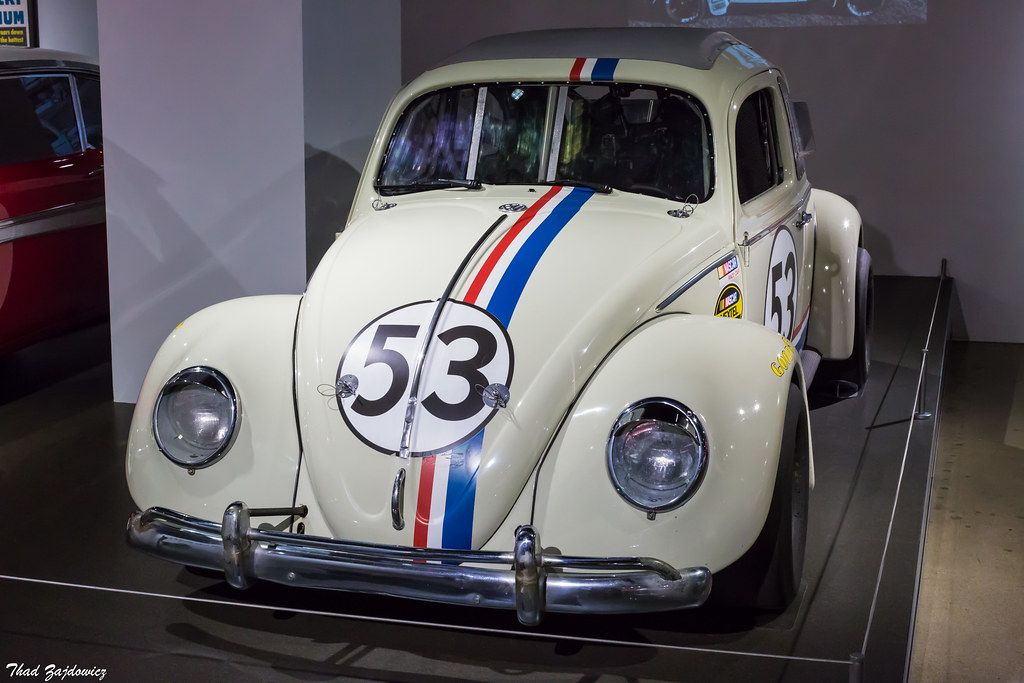
7. **1963 Volkswagen Beetle, ‘The Love Bug’**
Who could ever forget Herbie, the adorable pearl white Volkswagen Beetle with a mind and heart of its own? This charming little car, the iconic striped ‘Love Bug,’ captured hearts in not just one, but several beloved Disney films, instantly becoming a fan favorite. It wasn’t just cute; Herbie was a bona fide star from the start, a sentient vehicle that showed more personality than many human actors, defying expectations with its wit and endearing antics.
It’s truly a fantastic piece of Hollywood lore to imagine the casting process for Herbie! Both Toyota and Volvo, well-respected automotive brands, actually showed up for the film’s vehicle casting call. But it was the Volkswagen Beetle that stole the show so completely that the movie crew was reportedly “so enamored with the Beetle that crew members began to pet it.” Talk about instant chemistry on set! This undeniable connection secured Herbie’s place in cinematic history, proving that even the most unassuming car can become an undeniable superstar, beloved by millions worldwide.
With more than 11 different Herbies created for the original movies, these little Beetles certainly had a busy career, performing stunts and delivering heartwarming moments. And their legacy lives on! One of the primary cars used during the filming of ‘Herbie Goes to Monte Carlo’ recently sold at auction in 2018 for a significant $128,700 to a private collector. This lucky Herbie is still maintained in running condition, ensuring that the magic and spirit of that iconic striped “Love Bug” continues to captivate new generations of fans and car enthusiasts alike.
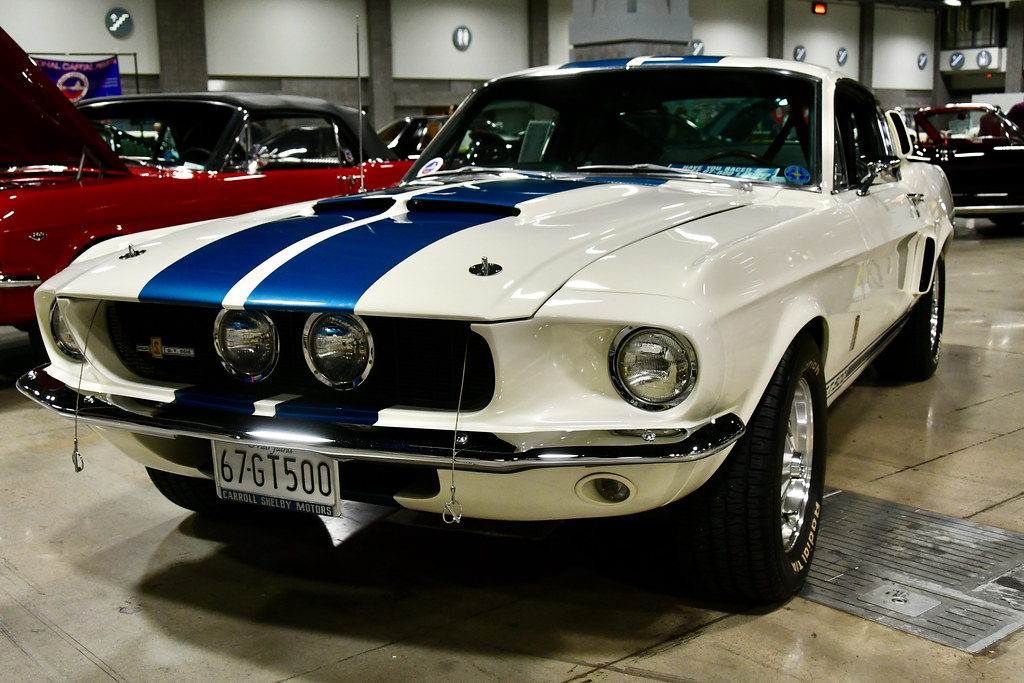
8. **1967 Shelby GT500, ‘Gone in Sixty Seconds’ (Eleanor)**
Prepare yourselves, because next up is a car so fierce, it practically has its own fan club and a legendary status all its own: Eleanor, the breathtaking black-striped 1967 Ford Mustang from the explosive 2000 remake of ‘Gone in Sixty Seconds.’ This wasn’t just any Mustang; it was a heavily exaggerated GT500, meticulously designed by the brilliant Steve Stanford, and its instantly recognizable, aggressive aesthetic has been copied and replicated countless times ever since the movie became a massive hit. Talk about a true trendsetter that continues to influence car culture!
The demands of filming such an action-packed movie meant that this iconic car had to be reproduced in high numbers. An impressive total of 11 Mustangs were reportedly created for the film, each serving various purposes from hero shots to stunt work. Shockingly, only three of these functional vehicles weren’t mere shells, and incredibly, two of those three actual driving cars were ultimately destroyed during the course of filming! That’s the intense price of cinematic perfection and high-octane car chases, but it only adds to the mystique and legendary status of the surviving ‘hero car.
The ultimate prize, the specific Eleanor driven by Nicolas Cage’s character as the movie reaches its exhilarating climax, is a truly coveted piece of automotive history. This ‘hero car‘ commanded an eye-popping $1.1 million at auction in 2013, solidifying its place as one of the most desirable movie cars ever. Eleanor isn’t just a car; she’s a timeless symbol of raw power, sleek design, and the ultimate cool factor, consistently making gearheads’ hearts race and inspiring countless custom builds around the globe.
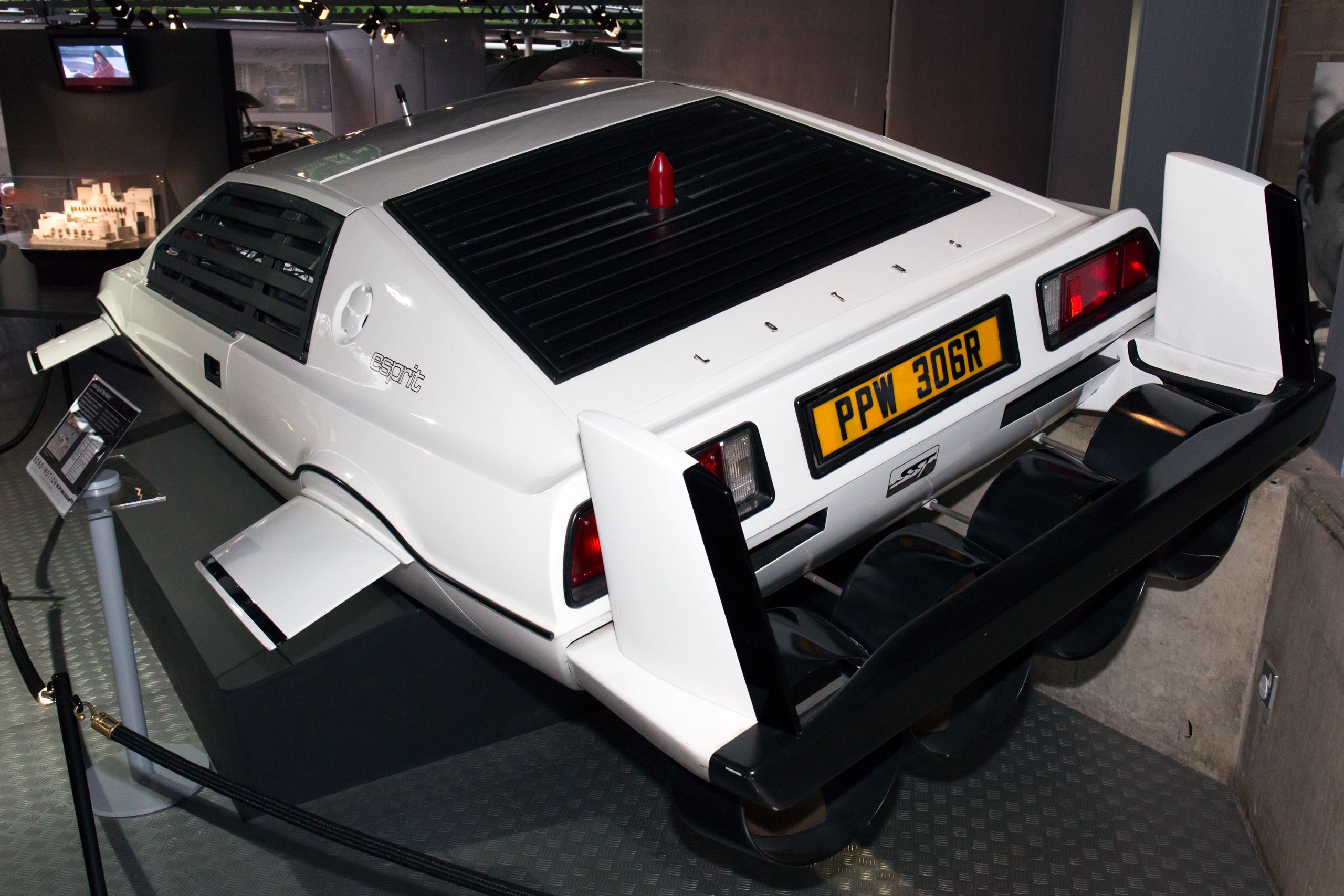
9. **1977 Lotus Esprit, ‘The Spy Who Loved Me’**
James Bond always has the coolest gadgets and the most luxurious rides, but sometimes, his cars transcend mere transportation and venture into the realm of pure fantasy. Enter the incredibly innovative 1977 Lotus Esprit from ‘The Spy Who Loved Me’ – famously known as the car that literally transformed into a submarine! Yes, you absolutely read that right. Who could ever forget the jaw-dropping, iconic moment when Roger Moore’s Bond drove this sleek white beauty straight off a pier, only for it to seamlessly morph into a fully functional underwater vehicle? It was a moment that permanently redefined what a spy car could be, leaving audiences around the world utterly captivated and asking, ‘How did they *do* that?!
This wasn’t just movie magic relying on simple camera tricks; it was a marvel of on-screen engineering and practical effects for its time! Two Lotus Esprits were initially used for the film, including a heavily modified and surprisingly robust car that was affectionately dubbed ‘Wet Nellie’ for obvious reasons. This wasn’t just a prop shell; Wet Nellie was meticulously engineered to be fully water-tight, complete with articulated fins and powerful underwater motors, making it genuinely capable of operating as a submerged vehicle ready for deep-sea espionage. Talk about taking concept car development to the absolute extreme for the sake of Hollywood artistry!
The story behind Wet Nellie gets even cooler and more unexpected! After its cinematic adventures, this unique piece of film history was eventually sold at auction in 2013 to none other than Tesla co-founder Elon Musk. Imagine that! The visionary entrepreneur behind some of today’s most advanced electric vehicles and ambitious space endeavors now owns the very car that turned into a submarine – a perfect, almost poetic, full-circle moment for a vehicle that truly pushed the boundaries of automotive possibility, both on screen and in our imaginations, cementing its place as the third greatest movie/TV car of all time.
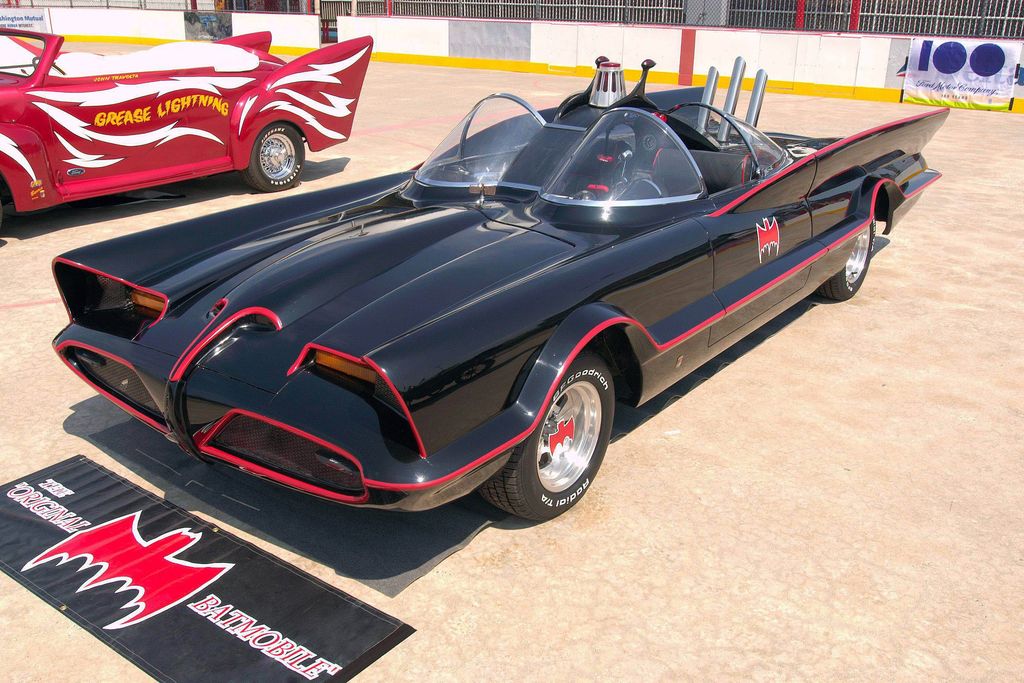
10. **1955 Lincoln Futura Batmobile, ‘Batman’ (1966 Series)**
Before the dark, brooding, and hyper-realistic Batmobiles of recent cinematic eras, there was *the* Batmobile – the vibrant, unforgettable star from the campy, utterly iconic 1966-1968 ‘Batman’ TV series. This wasn’t just any vehicle; it was a fantastically repurposed 1955 Lincoln Futura concept car, famously transformed and restyled by the legendary custom car builder, George Barris. With its unmistakable black and red color scheme, dramatic fins, clear bubble domes, and the promise of ‘Turbines to speed,’ it was an instant icon that perfectly captured the playful, energetic spirit of the show, screaming ‘BAM! POW! ZAP!’ with every appearance.
This Batmobile wasn’t just visually striking; it was pure, unadulterated fun and an absolute embodiment of the lighthearted, colorful spirit that made the classic series a pop culture phenomenon. It looked ready to chase villains through Gotham’s streets, complete with its various crime-fighting gadgets, all while maintaining an unparalleled level of sheer cool. For an entire generation of viewers, this car defined what the Caped Crusader’s ultimate ride should look like, leaving an indelible mark on superhero lore and influencing countless toy designs, comic book interpretations, and fan imaginations for decades to come.
And talk about a lasting legacy and incredible value! The original Batmobile from the 1966 series proved its timeless appeal and collector desirability by selling at auction in 2013 for an astounding $4.2 million. While it might not leap across buildings or withstand rocket attacks like its modern counterparts, this historical vehicle occasionally still makes special appearances at high-profile car shows across the country. It stands as a magnificent testament to a vehicle that became, for many, *the* Batmobile, a true automotive superhero that drove its way into the hearts of fans worldwide.
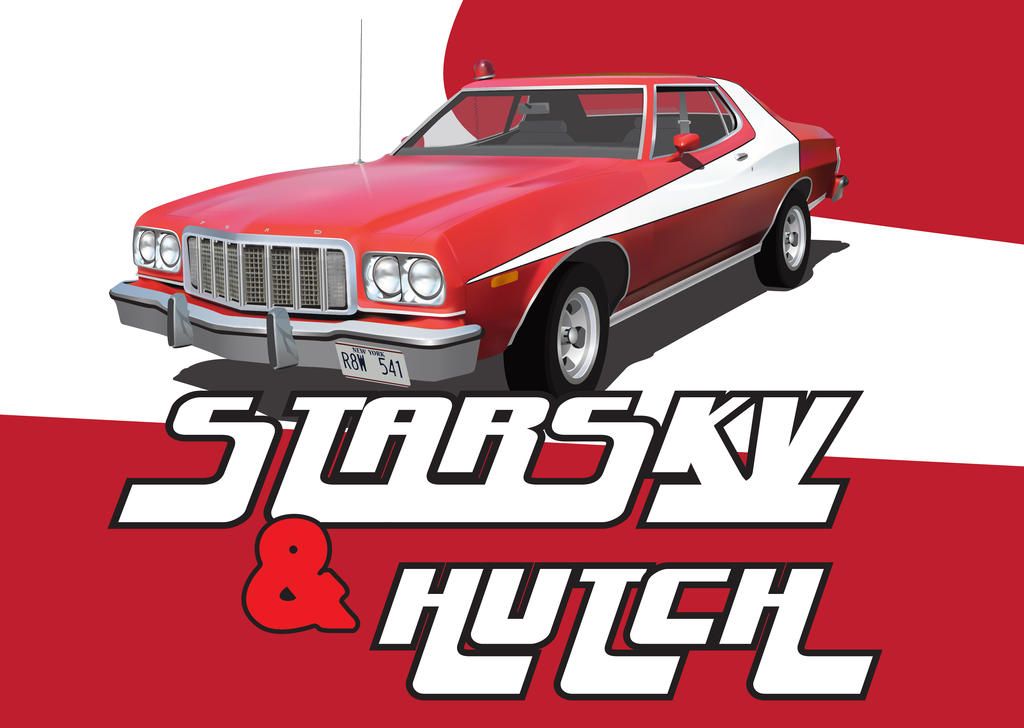
11. **1974-1976 Ford Gran Torino, ‘Starsky and Hutch’**
If you tuned into television in the groovy 1970s, there’s no way you could have missed the bright red car with that unmistakable, distinctive white stripe cruising the sun-drenched streets of Bay City, California. We’re talking, of course, about the 1974-1976 Ford Gran Torino from the wildly popular ‘Starsky and Hutch’ detective show, affectionately (or perhaps not-so-affectionately) known to fans as the ‘striped tomato.’ It might have been the world’s least subtle undercover cop car, but for four glorious, action-packed seasons on ABC, from 1975 to 1979, it was undeniably awesome and totally iconic!
This ‘striped tomato’ was practically a third main character, becoming synonymous with the show’s signature high-speed pursuits and daring stunts. To keep up with the demands of network television production and those thrilling chase scenes, the show utilized several different models of the same car, all requiring souped-up V8 engines and some serious, custom tinkering with their gears. This ensured that the Gran Torino could handle all the jumps, slides, and precision driving required, truly making it a workhorse on wheels that captivated audiences with its raw power and agility.
The enduring popularity and immediate recognizability of the ‘striped tomato’ led Ford itself to churn out an impressive 1,300 replicas to cash in on the show’s widespread appeal. While fantastic for fans at the time, this makes it a bit tricky for today’s eager collectors to figure out whether they’re getting their hands on one of the genuine screen-used cars or one of the many mass-produced homage vehicles. Regardless, the Gran Torino remains a vivid, instantly recognizable symbol of ’70s cool and a prime example of a TV car that became an undeniable, beloved star in its own right, forever etched in the annals of pop culture history.
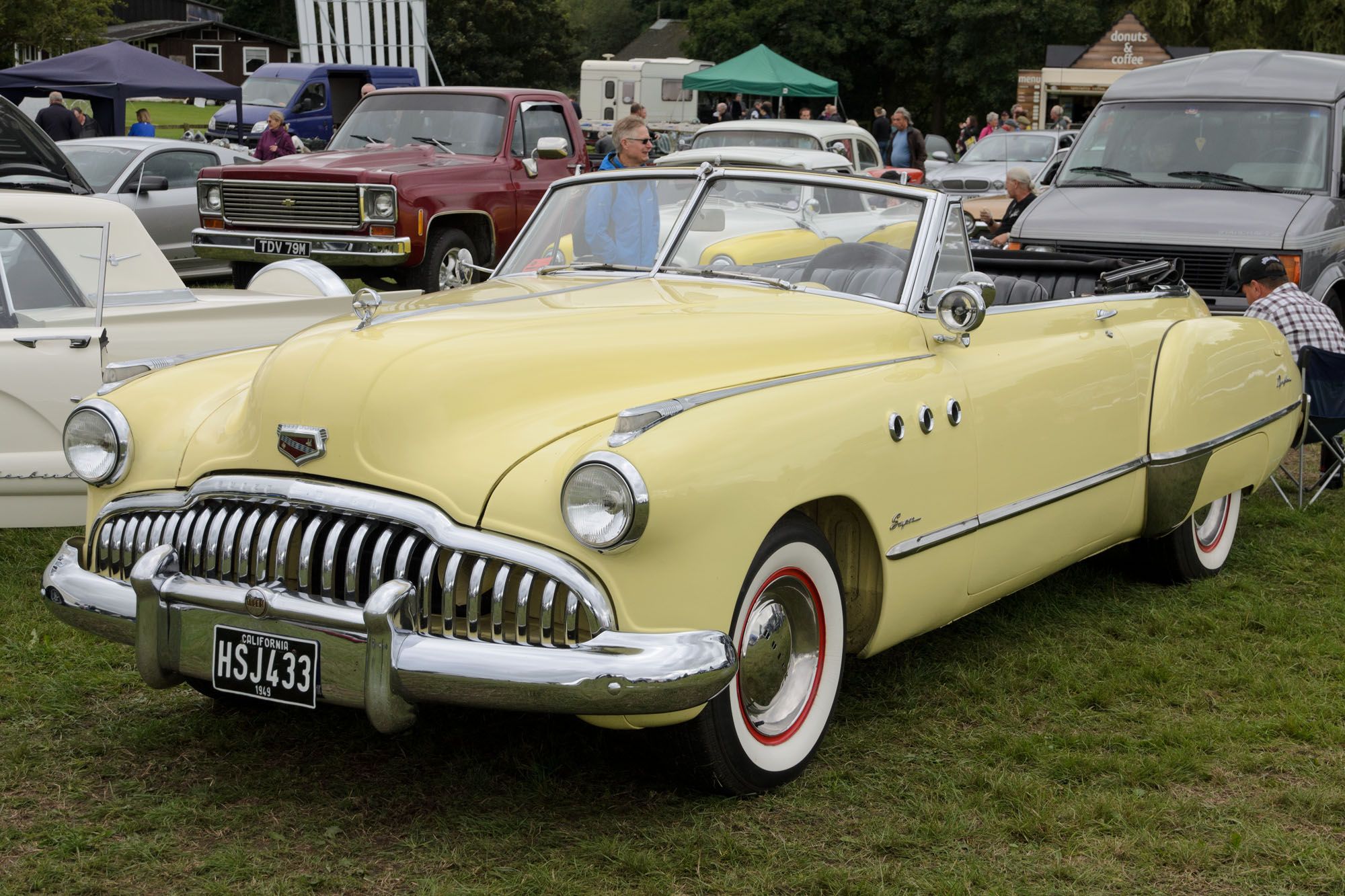
12. **1949 Buick Roadmaster, ‘Rain Man’**
When we reflect on the profoundly emotional and transformative road trip at the very heart of the acclaimed 1988 drama ‘Rain Man,’ two phenomenal actors, Dustin Hoffman and Tom Cruise, instantly spring to mind. Yet, there was a third, equally compelling and understated star riding along for every mile of that incredible journey: the magnificent 1949 Buick Roadmaster convertible. This wasn’t just a car; it was a character in itself, a silent, elegant observer to the brothers’ evolving, complex relationship, carrying the weight of their past and the promise of their future across the American landscape.
The movie’s attention to detail regarding this classic beauty was absolutely spot-on, enhancing its authenticity and role in the narrative. All the factual tidbits rattled off in the film about the famous movie car were meticulously accurate, including its distinctive ‘straight-eight’ engine, notable for having its cylinders aligned in a straight line rather than angled like a V. This meticulous accuracy made the car feel even more real and central to the unfolding drama, allowing it to subtly convey a sense of heritage and a connection to Raymond’s ordered world.
To manage the demands of filming, two of these elegant 1949 Buicks were utilized during production, ensuring continuity and reliability for the various scenes. And for collectors, the story gets even more exciting! The particular Roadmaster that Dustin Hoffman himself owned since filming wrapped, a tangible piece of cinematic history, was sold for a remarkable $335,000 earlier this year. It stands as a powerful testament that some cars transcend their mechanical purpose; they become cherished artifacts, embodying the emotional resonance of unforgettable performances and the enduring legacy of groundbreaking films.
From the quirky charm of a sentient Beetle to the raw power of an iconic Mustang, the ingenious transformation of a Lotus into a submarine, and the vibrant swagger of a classic Batmobile, these 12 vehicles truly illuminate just how much cars are more than mere machines. They are partners in adventure, silent witnesses to epic tales of heroism and heartbreak, and often, the very beating heart of the stories we love and cherish. They ignited our imaginations, fueled our automotive dreams from childhood, and etched themselves indelibly into the dynamic fabric of global pop culture forever, driving our collective memories forward.
Each of these four-wheeled legends, whether soaring through the air, chasing villains across city streets, or embarking on emotional cross-country journeys, proves that the magic of the silver screen is often best conveyed on four wheels. So, the next time you spot one of these iconic rides making an appearance on screen, take a moment to give a little nod of appreciation – because they’re not just moving across the frame; they’re moving us, inspiring us, and proving that the coolest characters sometimes don’t need a single line of dialogue.


